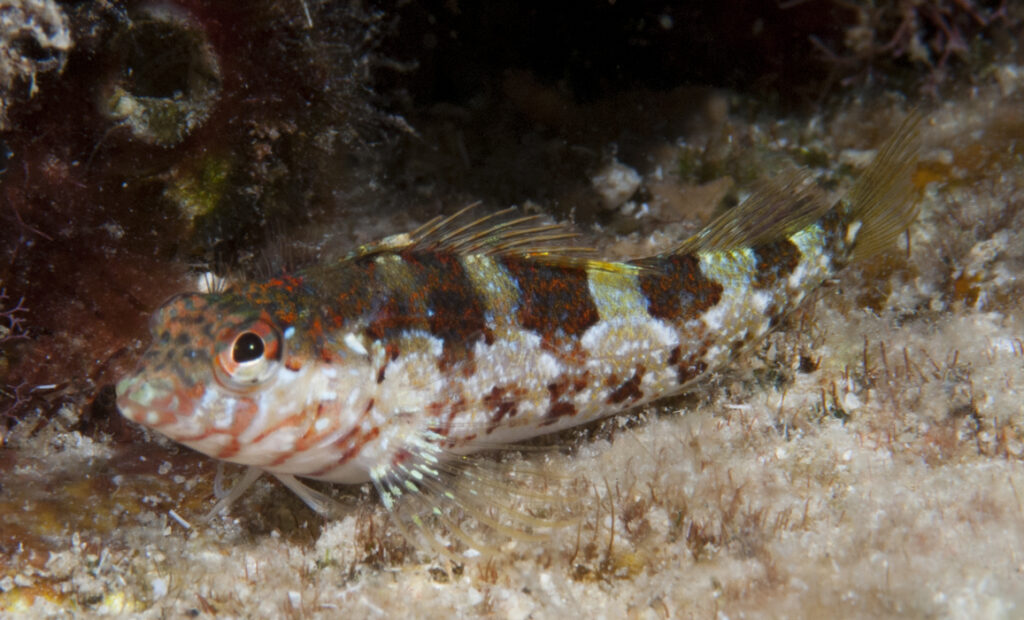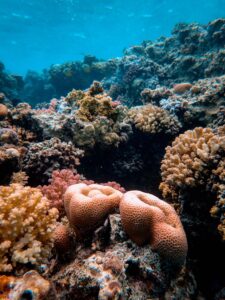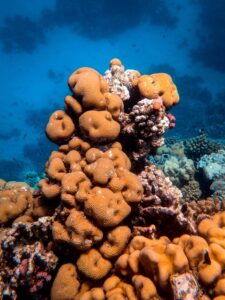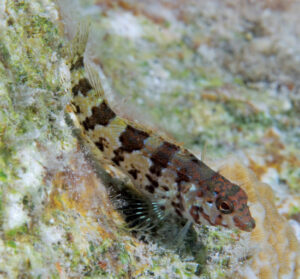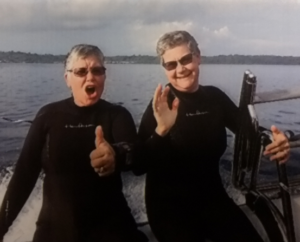My size is 1 1/2 – 2 ¼ inches and I am all over the world at depths from 6 to 50 ft. I have four dark, inverted, triangular patterns that form “saddles” across my back and a bar at the base of my tail. My under color is usually white, occasionally yellow to orange. I have faint, diamond-shaped patterns often on the lower body. I occasionally have red dots on my body, especially concentrated in dark areas. I inhabit reefs, move about the bottom and frequently stop to perch in tripod stance, supported by ventral fins and tail. I am popular in Cozumel provided you can find me! I am not shy and I like having my picture taken but others in my community are shy and hard to get close to. There are over 732 species of me. Good luck photographers.
Do you know who I am yet? I will give you a little time to think.
Our (Jan & Cathy) first dive trip to Cozumel was in 1986. We were not even aware of all the little things in the ocean with us. We were more interested in the big stuff and improving our skills. As time passed we began looking much closer at the reef and seeing a plethora of small creatures which excited our curiosity all the more.
Do you know who I am yet?
Here’s a bit more information.
My diet, I love to eat algae! I have little eyes that will stare back at you and I have quick head movements. I pop in and out of my respective hole and sometimes hover a few inches away but I do not venture far from home. I live on coral reefs for a few weeks and if lucky I can survive a few months. Researchers are only beginning to investigate and understand how important a tiny reef dwelling fish like me is to the ocean ecosystem. I am now recognized as a favorite snack food for a wide range of predators from manta shrimp to groupers.
Have you guessed who I am yet?
I am Malacoctenus Triangulates, the Saddled Blenny.
The Saddle Blenny gets it’s name from their pale yellow to white color with 4 or 5 brown to reddish-brown triangular saddles along the upper body and a bar at the caudal fin base. One of the unique features of Blenny’s are their eyebrow like appendages called cirri. These are used to feel for pressure waves of potential approaching predators. The Saddled Blenny has one branched cirrus over the nostrils, a long, branched cirrus over the eyes and a pair of branched cirrus of each side of the nape. There are 18 species world wide in the genus Malacoctenus, 14 of which can be found in Mexican waters. The Saddled Blenny likes to feed on small crustaceans that happen by. Blenny eggs are also laid inside of a little hole or lair and are tended to by the males, the females take no part in the care of the eggs.

